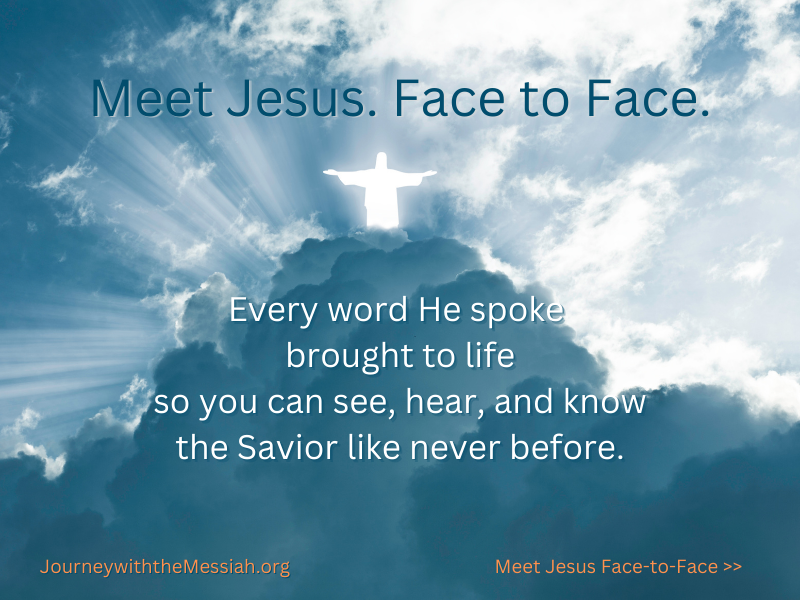
Life
FREE Catholic Classes
(Greek zoe ; Latin vita ; French La vie , German Das Leben ; vital principle; Greek psyche ; Latin anima , vis vitalis , German leberzskraft ).
The enigma of life is still one of the two or three most difficult problems that face both scientist and philosopher, and notwithstanding the progress of knowledge during the past twenty-three hundred years we do not seem to have advanced appreciably beyond the position of Aristotle in regard to the main issue. What are its characteristic manifestations? What are its chief forms? What is the inner nature of the source of vital activity? How has life arisen? Such are among the chief questions which present themselves with regard to this subject.
I. HISTORY A. Greek Period
The early Greek philosophers for the most part looked on movement as the most essential characteristic of life, different schools advocating different material elements as the ultimate principle of life. For Democritus and most of the Atomists it was a sort of subtle fire. For Diogenes it was a form of air. Hippo derives it from water. Others compound it of all the elements, whilst some of the Pythagoreans explain it as a harmony -- foreshadowing modern mechanical theories. Aristotle caustically remarks that all the elements except earth had obtained a vote. With him genuine scientific and philosophic treatment of the subject begins, and the position to which he advanced it is among the finest evidences of both his encyclopedic knowledge and his metaphysical genius. His chief discussions of the topic are to be found in his peri psyches and peri zoön geneseos .
For Aristotle the chief universal phenomena of life are nutrition, growth, and decay. Movement or change in the widest sense is characteristic of all life but plants are incapable of local movement. This follows on desire, which is the outcome of sensation. Sentiency is the differentia which constitutes the second grade of life -- that of the animal kingdom. The highest kind of life is mind or reason, exerting itself in thought or rational activity. This last properly belongs to man. There are not in man three really distinct souls, as Plato taught. Instead, the highest or rational soul contains eminently or virtually in itself the lower animal or vegetative faculties. But what is the nature of the inner reality from which vital activity issues? Is it one of the material elements? Or is it a harmony the resultant of the balance of bodily forces and tendencies? No. The solution for Aristotle is to be found in his fundamental philosophical analysis of all sensible being into the two ultimate principles, matter and form. Prime Matter ( materia prima ) is the common passive potential element in all sensible substances; form is the determining factor. It actualizes and perfects the potential element. Neither prime matter nor any corporeal form can exist apart from each other. They are called substantial principles because combined they result in a being; but they are incomplete beings in themselves, incapable of existing alone. To the form is due the specific nature of the being with its activities and properties. It is the principle also of unity. (See FORM; MATTER.) For Aristotle, in the case of living natural bodies the vital principle, psyche is the form. His doctrine is embodied in his famous definition: psyche estin entekexeia e prote somatos fysikou dynamei zoen exontos . (De Anima, II, i), i.e. the soul is therefore the first entelechy (substantial form or perfect actualization) of a natural or organized body potentially possessing life. The definition applies to plants, animals, and man. The human soul, however, endowed with rationality is of a higher grade. It is form of the body which it animates, not in virtue of its rationality but through the vegetative and sentient faculties which it also possesses. The union of these two principles is of the most intimate character, resulting in one individual being. The form or entelechy, is therefore not a substance possessed of a distinct being from that of the body; nor in the case of animals and plants is it a reality separable from the body. The human soul, however, seems to be of a different kind ( genos etepron ), and separable as the eternal from the perishable. Aristotle's conception of the soul differs fundamentally from that of Plato for whom the vital principle is related to the body only as the pilot to the ship; who moreover distinguishes three numerically different souls in the individual man.
The Aristotelian theory in its essential features was adopted by Albertus Magnus and St. Thomas, and the doctrine of the vital principle as form of the body prevailed supreme throughout the Middle Ages. The differences separating the rational soul from the vital principle of the plant or animal, and the relations between intellectual activity and sensory cognition became more clearly defined. The human soul was conceived as a spiritual substantial principle containing virtually the lower faculties of sensory and vegetative life. It is through this lower organic capacity that it is enabled to inform and animate the matter of the body. But the human soul always remains a substance capable of subsisting of itself apart from the body, although the operations of its lower faculties would then necessarily be suspended. Because of its intrinsic substantial union with the material of the organism, the two principles result in one substantial being. But since it is a spiritual being retaining spiritual activities, intrinsically independent of the body, it is, as St. Thomas says, non totaliter immersa , not entirely submerged in matter, as are the actuating forms of the animal and the plant.
Moreover, the vital principle is the only substantial form of the individual being. It determines the specific nature of the living being, and by the same act constitutes the prime matter with which it is immediately and intrinsically united a living organized body. The Scotist School differed somewhat from this, teaching that antecedently to its union with the vital principle the organism is actuated by a certain subordinate forma corporeitatis . They conceived this form or collection of forms, however, as incomplete and requiring completion by the principle of life. This conception of inferior forms, though not easy to reconcile with the substantial unity of the human being, has never been theologically condemned, and has found favour with some modern Scholastic writers, as being helpful to explain certain biological phenomena.
With respect to the question of the origin of life Aristotle, followed by Albertus Magnus, St. Thomas, and the Schoolmen generally, believed in the spontaneous generation even of organisms comparatively high in the animal kingdom (see BIOGENESIS). The corruption of animal and vegetable matter seemed to result in the spontaneous generation of worms and insects, and it was universally assumed that the earth under the influence of moisture and the sun's heat could produce many forms of plant and animal life. St. Augustine taught in the fifth century that many minute animals were not formally created on the sixth day, but only potentially in a seminal condition in certain Portions of matter -- and subsequently several Catholic philosophers and theologians admitted this view as a probable theory (cf. Summa I:59:2 ; I:71:1 ). However, the concurrent agency of a higher cause working in nature was assumed as a necessary factor by all Christian thinkers.
C. Modern PeriodIn respect to the nature of life as in regard to so many other questions, Descartes (1596-1650) inaugurated a movement against the teaching of Aristotle and the Scholastics which, reinforced by the progress of science and other influences, has during the past two centuries and a half commanded at times considerable support among both philosophers and scientists. For Descartes there are but two agents in the universe -- matter and mind. Matter is extension ; mind is thought. There is no possibility of interaction between them. All changes in bodies have to be explained mechanically. Vital processes such as "digestion of food, pulsations of heart, nutrition, and growth, follow as naturally from dispositions of the organism as the movements of a watch." Plants and animals are merely ingeniously constructed machines. Animals, in fact are merely automata. In the "Traité de l'homme" (1664), he applied the language of cogs and pulleys also to human physiology. Thus muscular movement was explained as due to the discharge of "animal spirits " from the brain ventricles through the nerves into the muscles, the latter being thereby filled out as a glove when one blows into it. This tendency to regard the organism as a machine was also fostered by the rapid advances made in physics and chemistry during the eighteenth century and the earlier part of the nineteenth, as well as by the progress in anatomical research of the Italian schools, and even by the discoveries of such men as Harvey, Malpighi, and Bishop Stensen. The earlier crude mechanical conceptions were, however, constantly met by criticism from men like Stahl. If the advance of science seemed to explain some problems, it also showed that life-phenomena were not so simple as had been supposed. Thus Lyonet's work on the goat-moth revealed such a microscopic complexity that it was at first received with incredulity.
Stahl (1660-1734) himself advocated an exaggerated form of vitalism. Rejecting the mechanical theories of the Cartesian School, he taught that life has its source in a vital force which is identical with the rational soul in man. It is conceived as constructor of the body, exerting and directing the vital processes in a subconscious but instinctively intelligent manner by what he calls logos in contrast with logismos , whilst it rather inhabits than informs the body. Others separated the vital force from the sentient soul and adopted "didynamism". Notwithstanding the growth of materialism, vitalism achieved considerable success during the second half of the eighteenth century. It was, however, mostly of a vague and inconsistent character tinged with Cartesian dualism. The entity by which the organic processes were regulated was generally conceived as a tertium quid between soul and body, or as an ensemble of the vital forces in antagonism and conflict with those of inanimate matter. This was substantially the view held by the Montpellier school (e.g. Barthez, Bérard, Lordat) and by Bichat. Even to men like Cuvier life was simply a tourbillon , a vortex, a peculiar kind of chemical gyroscope. The Bildungstrieb or nisus formativus of Blumenbach (1752-1840), who judiciously profited by the work of his predecessors, exhibits an improvement -- but succeeding vitalists still showed the same want of philosophic grasp and scientific precision. Even a physiologist of the rank of Claude Bernard was constantly wavering between une idée créatrice -- whatever that may mean -- and une sorte de force législative mais nullement exécutive , and the mechanical organism of Descartes. Von Baer, Treviranus, and J. Muller favoured a mild kind of vitalism. Lotze here, as in his general philosophy, manifests a twofold tendency to teleological idealism and to mechanical realism. The latter, however, seems to prevail in his view as to the nature of vegetative life. The second and third quarters of the nineteenth century witnessed a strong anti-vitalist reaction: a materialistic metaphysic succeeded the idealistic Identitätsphilosophie . Even the crude matter-and-motion theories of Moleschott, Vogt, and Buchner gained a wide vogue in Germany, whilst Tyndall and Huxley represented popular science philosophy in England and enjoyed considerable success in America.
The advent of Darwinism too, turned men's minds to "phylogeny", and biologists were busy establishing genetic relationships and tracing back the infinite variety of living types to the lowly root of the genealogical tree. To such men life was little better than the movements of a complicated congeries of atoms evolved from some sort of primitive protoplasmic nebula. The continuous rapid advance both of physics and chemistry flattered the hope that a complete "explanation" of vital processes was at hand. The successful syntheses of organic chemistry and the establishment of the law of the conservation of energy in the first half of the nineteenth century were proclaimed as the final triumph of mechanism. Ludwig, Helmholtz, Huxley, Häckel, and others brought out new and improved editions of the seventeenth-century machine view of life. All physiology was reduced to processes of filtration, osmosis, and diffusion, plus chemical reactions. But with the further advance of biological research, especially from about the third quarter of the last century, there began to find expression among many investigators an increasing conviction that though physico-chemistry might shed light on sundry stages and operations of vital processes, it always left an irreducible factor unexplained. Phenomena like the healing of a wound and even regular functions like the behaviour of a secreting cell, or the ventilating of the lungs, when closely studied, did not after all prove so completely amenable to physical treatment. But the insufficiency of physico-chemistry became especially apparent in a new and most promising branch of biological research -- experimental morphology, or as one of its most distinguished founders, W. Roux, has called it, Entwicklungsmechanik . The embryological problem of individualistic development had not been adequately studied by the older vitalists -- the microscope had not reached anything like its present perfection -- and this was one main cause of their failure. The premature success of the evolution theory too, had led to a blind, unquestioning faith in "heredity", "variation", and ' natural selection" as the final solvents of all difficulties, and the full significance had not yet been realized of what Wilson styles "the key to all ultimate biological problems" -- the lesson of the cell. Recent investigation in this field and better knowledge of morphogenesis have revealed new features of life which have conduced much towards a widespread neovitalistic reaction.
Among the chief of these has been the increased proof of the doctrine of epigenesis. Already in the eighteenth century embryologists were sharply divided as to the development of the individual organism. According to the advocates of preformation or predelineation , the growth of the embryo was merely the expansion or evolution of a miniature organism. This theory was held by ovulists like Swammerdam, Malpighi, Bonnet, and Spallanzani, and by animalculists like Leeuwenhoek, Hartsoeker, and Leibniz. In this view the future organism pre-existed in the primitive germ-ovum or spermatazoon, as the flower in the bud. Development is a mere"unfolding", analogous to the unrolling of a compressed pocket-handkerchief. Though not quite so crude as these early notions, the views of men like Weismann are really reducible to preformation. Indeed the logical outcome of all such theories is the "encasement" of all succeeding generations within the first germ-cell of the race. The opposite doctrine of "epigenesis", viz., that the development of the embryo is real successive production of visible manifoldness, real construction of new parts, goes back to Aristotle. It was upheld by Harvey, Stahl, Buffon, and Blumenbach. It was also advocated by the distinguished Douai priest, J. Turberville Needham (171-1781), who achieved distinction in so many branches of science. In its modern form O. Hertwig and Driesch have been amongst its most distinguished defenders. With some limitations J. Reinke may also be classed with the same school, though his system of "dominants" is not easy to reconcile with unity of form in the living being and leaves him what Driesch styles a "problematic vitalist". The modern theory of epigenesis, however, in the form defended, e.g. by Driesch, is probably not incompatible with the hypothesis of prelocalized areas of specific cytoplasmic stuffs in the body of the germ-cells, as advocated by Conklin and Wilson. But anyhow the modern theory of pre-delineation demands a regulating formative power in the embryo just as necessarily as the epigenetic doctrine. Moreover, in addition to the difficulty of epigenesis, the inadequacy of mechanistic theories to account for the regeneration of damaged parts of the embryo is becoming more clearly recognized every day. The trend of the best scientific thought is clearly evident in current biological literature. Thus Professor Wilson of Columbia University in 1906 closes his admirable exposition of the course of research over the whole field with the conclusion that "the study of the cell has on the whole seemed to widen rather than to narrow the enormous gap that separates even the lowest form of life from the inorganic world" (The Cell, 434). In these words, however, he is only affirming a fact to which the distinguished Oxford biologist Dr. Haldane also testifies:
To any physiologist who candidly reviews the progress of the last fifty years, it must be perfectly evident that, so far from having advanced towards a physico-chemical explanation of life, we are in appearance very much farther from one than we were fifty years ago. We are now more definitely aware of the obstacles to any advance in this direction, and there is not the slightest indication that they will be removed, but rather that with further increase of knowledge and more refined methods of physical and chemical investigation they will only appear more and more difficult to surmount. (Nineteenth Century 1898, p. 403).Later in Germany, Hans Driesch of Heidelberg became, perhaps, the most candid and courageous advocate of vitalism among German biologists of the first rank. From 1899 he proclaimed his belief in the "autonomy" and "dynamical teleology " of the organism as a whole. The vital factor he boldly designates "entelechy", or "psychoid", and advocated a return to Aristotle for the most helpful conception of the principle of life. His views on some points were unfortunately and quite unnecessarily, as it seems to us, encumbered by Kantian metaphysics -- and he appeared not to have adequately grasped the Aristotelian notion of entelechy as a constitutive principle of the living being. Still he has furnished valuable contributions both to science and the philosophy of life.
Side by side with this vitalistic movement there continued an energetic section of representatives of the old mechanical school in men like Hackel, Loeb, Le Dantec, and Verworn, who have attempted physico-chemical explanations; but no new arguments have been adduced to justify their claims. Many others, more cautious, adopt the attitude of agnosticism. This position, as Reinke justly observes, has at least the merit of dispensing from the labour of thinking. The present neo-vitalistic reaction, however, as the outcome of very extensive and thorough-going research, is, we venture to think, the harbinger of a widespread return to more accurate science and a sounder philosophy in respect to this great problem. With regard to the question of the origin of life, the whole weight of scientific evidence and authority during the past half century has gone to demonstrate with increasing cogency Harvey's axiom Omne vivens ex vivo , that life never arises in this world save from a previous living being. It claims even to have established Virchow's generalization (1858) Omnis cellula ex cellula , and even Flemming's further advance (1882), Omnis nucleus e nucleo .
The history of vitalism, which we have thus briefly outlined, shows how the advance of biological research and the trend of the best modern scientific thought is moving steadily back in the direction of that conception of life to be found in the scholastic philosophy, itself based on the teaching of Aristotle. We shall now attempt a fuller positive treatment of the doctrine adopted by the great body of Catholic philosophers.
II. DOCTRINE A. Science
Life is that perfection in a living being in virtue of which it is capable of self-movement or immanent action . Motion, thus understood includes, besides change of locality, all alterations in quality or quantity, and all transition from potentiality to actuality. The term is applied only analogically to God, who is exempt from even accidental modification. Self-movement of a being is that effected by a principle intrinsic to the nature of the being, though it may be excited or stimulated from without. Immanent action is action of which the terminus remains within the agent itself, e.g. thought, sensation, nutrition. It is contrasted with transient action, of which the effect passes to a being distinct from the agent, e.g. pushing, pulling, warming, etc. Immanent activity can be the property only of a principle which is an intrinsic constituent of the agent. In contrast with the power of self-movement, inertia is a fundamental attribute of inanimate matter. This can only be moved from without.
There are three grades of life essentially distinct: vegetative, sentient or animal, and intellectual or spiritual life; for the capacity for immanent action is of three kinds. Vegetative operations result in the assimilation of material elements into the substance of the living being. In animal conscious life the vital act is a modification of the sentient organic faculty, whilst in rational life the intellect expresses the object by a purely spiritual modification of itself. Life as we know it in this world is always bound up with organized matter, that is, with a material structure consisting of organs, or heterogeneous parts, specialized for different functions and combined into a whole.
The ultimate units of which all organisms, whether plant or animal are composed, are minute particles of protoplasm, called cells. But even in the cell there is differentiation in structural parts and in function. In other words, the cell itself living apart is an organism. The complexity of living structures varies from that of the single cell amoeba up to the elephant or man. All higher organisms start from the fusion of two germcells, or gametes. When these are unequal the smaller one -- the spermatozoon -- is so minute in relation to the larger, or ovum, that their fusion is commonly spoken of as the fertilization of the ovum by the spermatozoon. The ovum thus fertilized is endowed with the power, when placed in its appropriate nutrient medium, of building itself up into the full-sized living being of the specific type to which it belongs. Growth throughout is effected by a continuous process of cell cleavage and multiplication. The fertilized ovum undergoes certain internal changes and then divides into two cells juxtaposed. Each of the pair passes through similar changes and subdivides in the same way, forming a cluster of four like cells, then of eight, then of sixteen and so on. The specific shape and different organs of the future animal only gradually manifest themselves. At first the cells present the appearance of a bunch of grapes or the grains of a mulberry, the morula stage; the growth proceeds rapidly, a cavity forms itself inside and the blastosphere stage is reached. Next, in the case of invertebrates, one part of the sphere invaginates or collapses inwards and the embryo now takes the shape of a small sac, the gastrula stage. In vertebrates instead of invagination there is unequal growth of parts and the development continuing, the outlines of the nervous system, digestive cavity, viscera, heart, sense-organs, etc. appear, and the specific type becomes more and more distinct, until there can be recognized the structure of the particular animal -- the fish, bird, or mammal. The entire organism, skin, bone, nerve, muscle, etc. is thus built up of cells, all derived by similar processes ultimately from the original germ cell. All the characteristic features of life and the formative power which constructs the whole edifice is thus possessed by this germ-cell, and the whole problem of life meets us here.
The chief phenomena of life can be seen in their simplest form in a unicellular organism, such as the amoeba. This is visible under the microscope as a minute speck of transparent jelly-like protoplasm, with a nucleus, or a darker spot, in the interior. This latter, as Wilson says, may be regarded as "a controlling centre of cell activity." It plays a most important part in reproduction, and is probably a constituent part of all normal cells, though this point is not yet strictly proved. The amoeba exhibits irritability or movement in response to stimulation. It spreads itself around small particles of food, dissolves them, and absorbs the nutritive elements by a process of intussusception, and distributes the new material throughout its substance as a whole, to make good the loss which it is constantly undergoing by decomposition. The operation of nutrition is an essentially immanent activity, and it is part of the metabolism, or waste and repair, which is characteristic of living organisms. The material thus assimilated into the living organism is raised to a condition of chemically unstable equilibrium, and sustained in this state while it remains part of the living being. When the assimilation exceeds disintegration the animal grows. From time to time certain changes take place in the nucleus and body of the cell, which divides into two, part of the nucleus, reconstituted into a new nucleus, remaining with one section of the cell, and part with the other. The separated parts then complete their development, and grow up into two distinct cells like the original parent cell. Here we have the phenomenon of reproduction. Finally, the cell may be destroyed by physical or chemical action, when all these vital activities cease. To sum up the account of life in its simplest form, in the words of Professor Windle:
The amoeba moves, it responds to stimuli, it breathes and it feeds, it carries on complicated chemical processes in its interior. It increases and multiplies and it may die. (What is Life?, p. 36.) B. PhilosophyThese various phenomena constituting the cycle of life cannot, according to the Schoolmen, be rationally conceived as the outcome of any collection of material particles. They are inexplicable by mere complexity of machinery, or as a resultant of the physical and chemical properties of matter. They establish, it is maintained, the existence of an intrinsic agency, energy, or power, which unifies the multiplicity of material parts, guides the several vital processes, dominates in some manner the physical and chemical operations, controls the tendency of the constituents of living substance to decompose and pass into conditions of more stable equilibrium, and regulates and directs the whole series of changes involved in the growth and the building-up of the living being after the plan of its specific type. This agency is the vital principle ; and according to the Scholastic philosophers it is best conceived as the substantial form of the body. In the Peripatetic theory, the form or entelechy gives unity to the living being, determines its essential nature, and is the ultimate source of its specific activities. The evidence for this doctrine can be stated only in the briefest outline.
(1) Argument from physiological unity
The physiological unity and regulative power of the organism as a whole necessitate the admission of an internal, formal, constituent principle as the source of vital activity. The living being -- protozoon or vertebrate, notwithstanding its differentiation of material parts and manifoldness of structure, is truly one. It exercises immanent activity. Its organs for digestion, secretion, respiration, sensation, etc., are organs of one being. They function not for their own sakes but for the service of the whole. The well-being or ill-being of each part is bound up in intimate sympathy with every other. Amid wide variations of surroundings the livine organism exhibits remarkable skill in selecting suitable nutriment; it regulates its temperature and the rate of combustion uniformly within very narrow limits, it similarly controls respiration and circulation -- the composition of the blood is also kept unchanged with remarkable exactness throughout the species. In fact, life selects, absorbs, distributes, stores various materials of its environment for the good of the whole organism, and rejects waste products, spending its energy with wonderful wisdom.
This would not be possible were the living being merely an aggregate of atoms or particles of matter in local contact. Each wheel of a watch or engine -- nay each part of a wheel -- is a being quite distinct from, and in its existence intrinsically independent of every other. No spoke or rivet sickens or thrives in sympathy with a bar in another part of the machine, nor does it contribute out of its actual or potential substance to make good the disintegration of other parts. The combination is artificial; the union accidental, not natural. All the actions between the parts are transient, not immanent. The phenomena of life thus establish the reality of a unifying and regulating principle, energy, or force, intimately present to every portion of the living creature, making its manifold parts one substantial nature and regulating its activities.
(2) Morpho-genetic argument: Growth
The tiny fertilized ovum placed in a suitable medium grows rapidly by division and multiplication, and builds up an infinitely complex structure, after the type of the species to which it belongs. But for this something more than the chemical and physical properties of the material elements engaged is required. There must be from the beginning some intrinsic formative power in the germ to direct the course of the vast series of changes involved. Machines may, when once set up be constructed to perform very ingenious operations. But no machine constructs itself, still less can it endow a part of its structure with the power of building itself up into a similar machine. The establishment of the doctrine of epigenesis has obviously increased indefinitely the hopelessness of a mechanical explanation. When it is said that life is due to the organization of matter, the question at once arises: What is the cause of the organization? What but the formative power -- the vital principle of the germ cell? Again the growing organism has been compared to the building up of the crystal. But the two are totally different. The crystal grows by mere aggregation of external surface layers which do not affect the interior. The organism grows by intussusception, the absorption of nutriment and the distribution of it throughout its own substance. A crystal liberates energy in its formation and growth. A living body accumulates potential energy in its growth. A piece of crystal too is not a unity. A part of a crystal is still a crystal. Not so, a part of a cow. A still more marvellous characteristic of life is the faculty of restoring damaged parts. If any part is wounded, the whole organism exhibits its sympathy; the normal course of nutrition is altered the vital energy economizes its supplies elsewhere and concentrates its resources in healing the injured part. This indeed is only a particular exercise of the faculty of adaptation and of circumventing obstacles that interfere with normal activity, which marks the flexibility of the universal working of life, as contrasted with the rigidity of the machine and the immutability of physical and chemical modes of action.
The argument in favour of a vital principle from growth was reinforced by the introduction of experiment into embryology. Roux, Driesch, Wilson, and others, showed that in the case of the sea-urchin, amphioxus, and other animals, if the embryo in its earliest stages, when consisting of two cells, four cells, and in some cases of eight cells, be carefully divided up into the separate single cells, each of these may develop into a complete animal, though of proportionately smaller size. That is, the fertilized ovum which was naturally destined to become one normal animal, though prevented by artificial interference from achieving that end, has yet attained its purpose by producing several smaller animals; and in doing so has employed the cells which it produced to form quite other parts of the organism than those for which they were normally designed. This proves that there must be in the original cell a flexible formative power capable of directing the vital processes of the embryo along the most devious paths and of adapting much of its constituent material to the most diverse uses.
(3) Psychical Argument
Finally, we have immediate and intimate knowledge of our own living conscious unity. I am assured that it is the same ultimate principle within me which thinks and feels, which originates and directs my movements. It is this same principle which has governed the growth of all my sense-organs and members, and animates the whole of my body. It is this which constitutes me one rational, sentient, living being.
All these various classes of facts prove that life is not explicable by the mechanical, physical, and chemical properties of matter. To account for the phenomena there is required within the living being a principle which has built up the organism after a definite plan; which constitutes the manifold material a single being; which is intimately present in every part of it; which is the source of its essential activities; and which determines its specific nature. Such is the vital principle . It is therefore in the Scholastic terminology at once the final, the formal, and even the efficient cause of the living being.
C. Unity of the Living BeingIn each animal or plant there is only one vital principle, one substantial form. This is obvious from the manner in which the various vital functions are controlled and directed to one end -- the good of the whole being. Were there more than one vital principle, then we should have not one being but a collection of beings. The practice of abstraction in scientific descriptions and discussions of the structure and functions of the cell has sometimes occasioned exaggerated notions as to the independence and separateness of existence of the individual cell, in the organism. It is true that certain definite activities and functions are exercised by the individual cell as by the eye or the liver; and we may for convenience consider these in isolation: but in concrete reality the cell, as well as the eye or the liver exerts its activity by and through the living energy of the whole being. In some lowly organisms it is not easy to determine whether we are in presence of an individual being or a colony; but this does not affect the truth of the proposition that the vital principle being the substantial form, there can only be one such principle animating the living being. With respect to the nature of this unity of form there has been much dispute among the adherents of the Scholastic philosophy down to the present day. It is agreed that in the case of man the unity, which is of the most perfect kind, is founded on the simplicity of the rational or spiritual soul. In the case of the higher animals also it has been generally, though not universally held that the vital principle is indivisible. With respect to plants and lower forms of animal life in which the parts live after division, the disagreement is considerable. According to some writers the vital principle here is not simple but extended, and the unity is due merely to its continuity. According to others it is actually simple, potentially manifold, or divisible in virtue of the nature of the extended organism which it animates. There does not seem to be much prospect of a final settlement of the point.
D. Ultimate Origin of LifeThe whole weight of the evidence from biological investigation, as we have already observed, goes to prove with constantly increasing force that life never appears on the earth except as originating from a previous living being. On the other hand science also proves that there was a time in the past when no life could have possibly existed on this planet. How then did it begin? For the Christian and the Theist the answer is easy and obvious. Life must in the first instance have been due to the intervention of a living First Cause. When Weismann says that for him the assumption of spontaneous generation is a "logical necessity " (Evolution Theory, II, 366), or Karl Pearson, that the demand for "special creation or an ultrascientific cause" must be rejected because "it would not bring unity into the phenomena of life nor enable us to economize thought" (Grammar of Science, 353) we have merely a psychological illustration of the force of prejudice even in the scientific mind. A better sample of the genuine scientific spirit and a view more consonant with actual evidence are presented to us by the eminent biologist, Alfred Russel Wallace who, in concluding his discussion of the Darwinian theory, points out that
there are at least three stages in the development of the organic world when some new cause or power must necessarily have come into action. The first stage is the change from inorganic to organic, when the earliest vegetable cell, or the living protoplasm out of which it arose, first appeared. This is often imputed to a mere increase of complexity of chemical compounds; but increase of complexity with consequent instability, even if we admit that it may have produced protoplasm as a chemical compound, could certainly not have produced living protoplasm -- protoplasm which has the power of growth and of reproduction, and of that continuous process of development which has resulted in the marvellous variety and complex organization of the whole vegetable kingdom. There is in all this something quite beyond and apart from chemical changes, however complex; and it has been well said that the first vegetable cell was a new thing in the world, possessing altogether new powers -- that of extracting and fixing carbon from the carbon dioxide of the atmosphere that of indefinite reproduction, and still more marvellous, the power of variation and of reproducing those variations till endless complications of structure and varieties of form have been the result. Here, then, we have indications of a new power at work, which we may term vitality , since it gives to certain forms of matter all those characters and properties which constitute Life ("Darwinism", London, 1889, 474 5).For a discussion of the relation of life to the law of the conservation of energy, see ENERGY, where the question is treated at length.
Having thus expounded what we believe to be the teaching of the best science and philosophy respecting the nature and immediate origin of life, it seems to us most important to bear constantly in mind that the Catholic Church is committed to extremely little in the way of positive definite teaching on the subject. Thus it is well to recall at the present time that three of the most eminent Italian Jesuits, in philosophy and science, during the nineteenth century Fathers Tongiorgi, Secchi, and Palmieri, recognized as most competent theologians and all professors in the Gregorian University, all held the mechanical theory in regard to vegetative life, whilst St. Thomas and the entire body of theologians of the Middle Ages, like everybody else of their time, believed implicitly in spontaneous generation as an everyday occurrence. If therefore these decayed scientific hypotheses should ever be rehabilitated or -- which does not seem likely -- be even established, there would be no insuperable difficulty from a theological standpoint as to their acceptance.
Join the Movement
When you sign up below, you don't just join an email list - you're joining an entire movement for Free world class Catholic education.
An Urgent Message from Sister Sara – Please Watch
- Advent / Christmas
- 7 Morning Prayers
- Mysteries of the Rosary
- Litany of the Bl. Virgin Mary
- Popular Saints
- Popular Prayers
- Female Saints
- Saint Feast Days by Month
- Stations of the Cross
- St. Francis of Assisi
- St. Michael the Archangel
- The Apostles' Creed
- Unfailing Prayer to St. Anthony
- Pray the Rosary
![]()
Copyright 2025 Catholic Online. All materials contained on this site, whether written, audible or visual are the exclusive property of Catholic Online and are protected under U.S. and International copyright laws, © Copyright 2025 Catholic Online. Any unauthorized use, without prior written consent of Catholic Online is strictly forbidden and prohibited.
Catholic Online is a Project of Your Catholic Voice Foundation, a Not-for-Profit Corporation. Your Catholic Voice Foundation has been granted a recognition of tax exemption under Section 501(c)(3) of the Internal Revenue Code. Federal Tax Identification Number: 81-0596847. Your gift is tax-deductible as allowed by law.












